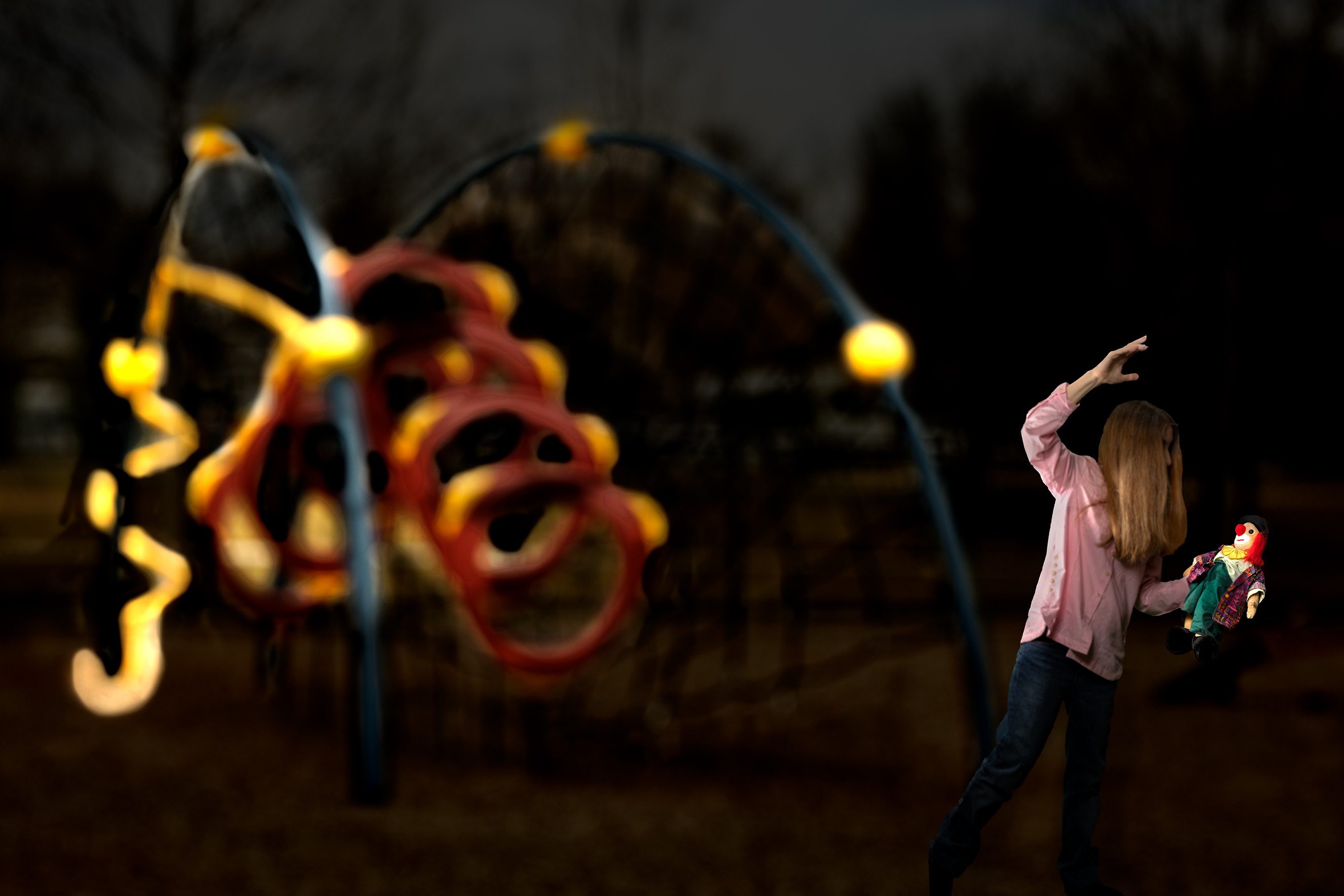
As the title of this post promises, here is the photograph that just last week joined my ongoing, award-winning “Marion under the Moon” series. As you may have already seen from its caption, its title is “Dream of the Playground Melting into Night.” https://lawrenceruss.comhttps://lawrenceruss.com/index/C0000nyIYjBmXbWE/G0000YbrlfdMLgx0/I0000QqAvhAH7LHw/index/C0000nyIYjBmXbWE/G0000YbrlfdMLgx0/I0000WiB4Vto8f1g
Several friends of mine, seeing it for the first time, have had wildly differing emotional reactions to it. One said that he thought that it was extremely scary, another said that it made her laugh. Both speculated about what is going on with or between Marion and the clown. One male friend said that the image provides “mysteries upon mysteries.” I’d be fascinated to hear how any of you respond to it.
But my clue doesn’t have to do with those questions. Here’s what I want you to consider: This image didn’t come to me in sleep; it wasn’t a dream in the literal sense, and wherever it came from, it continued to change as I tried to plan it and as I worked to execute it. It didn’t come from the kind of game of “chance” that the self-styled Surrealists played. And if I say to you that it isn’t a “surrealist” work — and I’ll ask you either to trust me on that or just go along with me for our purpose here – then what is it? Does the word “surrealism,” as most people use it, imply that there are things that don’t come out of mystery? Many of my photographs, although often they’re plainly not what critics might call “naturalistic,” are not, in truth, “surrealistic” or “expressionistic” or “impressionistic.” What are they, then? And I would say that Edward Weston’s “Pepper No. 30” is not surrealistic or “expressionistic” or “impressionistic,” though it is also not merely what people would call naturalistic. What is that something else or more that it evokes, that it does?
And what if no one, including its “creator” (meaning me) can say whether or not Marion is casting a spell on the little clown (as one of my friends suggested), or whether Marion and the clown are doing some kind of dance in celebration of what is or in honor of something passing, or whatever else is happening between Marion and the clown, or between any viewer and the image? Is that “saying” impossible or endless? How much does it or might it matter? Does Marion or the clown or the whole scene cast some kind of spell on you? Do you need to describe or define or name it? Is there really any end, are there really any banks, to confine the stream that flows from this image of Marion and the clown and the playground and the night — or that flows from any work of art that you love?